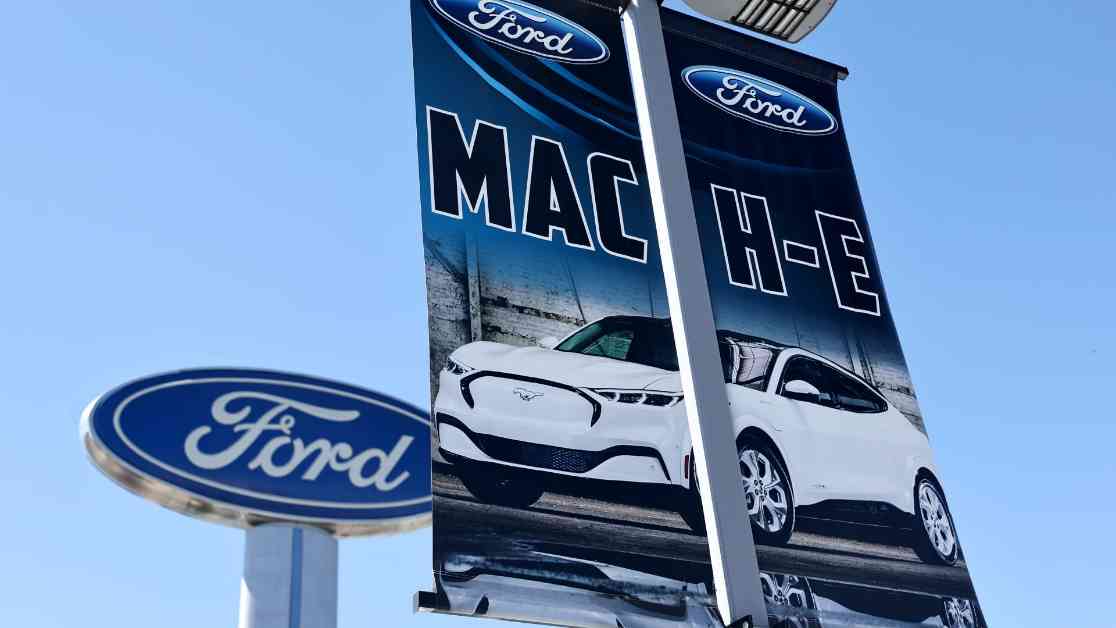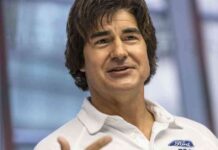Ford Motor Company has long been known for its profitable large trucks and SUVs in the U.S. market. However, the company is now embarking on a new strategy to prioritize electric vehicles (EVs) in order to stay competitive in the rapidly evolving automotive industry. The shift towards EVs is not only a strategic move for Ford but also a game-changer for investors looking to capitalize on the growing demand for electric vehicles.
Ford’s Chief Operating Officer for its Model e EV unit, Marin Gjaja, recently shared insights into the company’s new approach to EVs. He emphasized the importance of focusing on smaller, more affordable EVs to drive adoption rates in the market. Gjaja highlighted the competitive landscape, pointing out that Chinese automakers like BYD are rapidly expanding their presence in Europe and other regions.
The updated EV strategy announced by Ford includes significant investments totaling up to $1.9 billion. This includes expenses for the write-down of manufacturing assets and additional cash expenditures. The company is reevaluating its product lineup for North America, canceling a large electric three-row SUV in development and delaying the production of its next-generation electric full-size pickup truck.
The decision to prioritize smaller EVs over larger vehicles was not made lightly, especially considering the cancellation of the highly anticipated three-row SUV. Ford’s CEO, Jim Farley, had previously touted the vehicle as a potential game-changer for the company. However, the focus now shifts to introducing a commercial van in 2026, followed by a midsized pickup and the T3 full-size pickup in subsequent years.
Ford’s emphasis on smaller, more affordable EVs aligns with the company’s goal of creating a capital-efficient and profitable electric vehicle business. Farley highlighted the differences in profitability between internal combustion engine (ICE) vehicles and EVs, emphasizing the potential for smaller vehicles to drive volume and profitability in the EV market.
Despite the shift towards EVs, Ford’s current lineup of EVs, including the Mustang Mach-E crossover, F-150 Lightning, and a commercial van, have not been profitable overall. The Model e operations have reported significant losses, prompting Ford to withdraw its ambitious profit margin target for its EV unit by 2026. However, investors and analysts have shown support for the EV changes, leading to a positive response in the market.
In addition to its focus on all-electric vehicles, Ford is also prioritizing hybrid and plug-in hybrid electric vehicles (PHEVs) to meet fuel economy regulations. The company’s future capital expenditure plans will now allocate a smaller percentage towards all-electric vehicles, with a greater emphasis on hybrids. Ford aims to offer hybrid options across its entire North American lineup by 2030 to meet emissions and fuel economy requirements.
The automotive industry as a whole is facing challenges with the slower-than-expected adoption of EVs and profitability concerns. Gjaja acknowledged the market dynamics, noting that the demand for EVs has grown but not at the anticipated rate. There is also a growing threat from Chinese automakers entering the EV market with competitive and profitable offerings.
Ford’s shift towards smaller, more affordable EVs contrasts with its rival, General Motors (GM), which has taken a different approach to EVs. GM has focused on all-electric vehicles, including large pickup trucks, SUVs, and luxury crossovers. The company has invested in battery cell manufacturing and aims to achieve profitability on its EVs once it reaches a certain production threshold.
As the automotive industry continues to evolve, Ford is positioning itself to compete effectively in the EV market while maintaining profitability. The company’s strategic decisions reflect a commitment to innovation and adaptation in response to changing market dynamics. Investors and industry observers will be closely watching Ford’s progress as it navigates the transition towards a more electrified future.






















